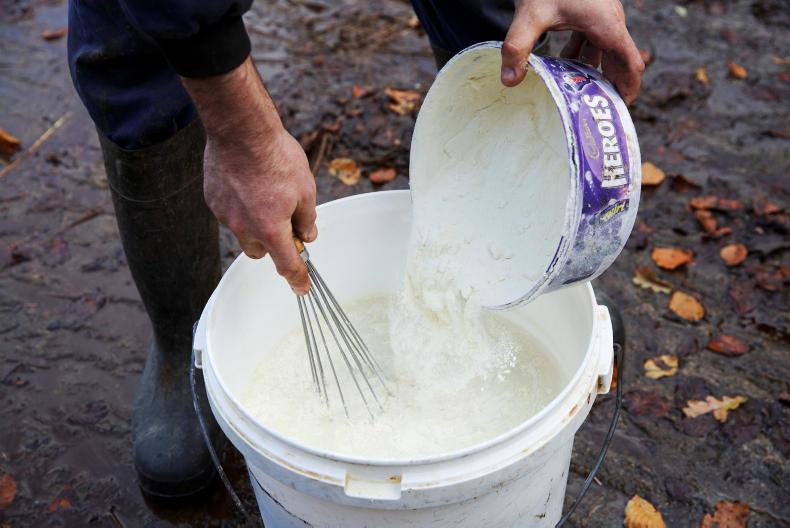Not so long ago, there were only two or three players in the milk replacer market. But since milk quotas were abolished in 2015, the Irish Farmers Journal milk replacer table has grown to more than three times its original size.
Table 1 gives a snapshot of the main calf milk replacer products available on the Irish market. In all cases, the price quoted reflects the recommended retail price quoted by the manufacturers and distributors. Bonanza milk replacers refused to participate.
Price will vary depending on the quantity ordered and the payment terms, with discounts available for prompt payment.
* Health package as standard
# Health package optional extra
Note: All bags 20kg except Vitalac Blue, ProCalf, ProHeifer and ProMilk, which are 25kg.
Many manufacturers are now including health packs in some of their higher-end products. These health packs are a combination of extra minerals and vitamins and/or yeasts or other added ingredients to help with digestion and to reduce disease.
Other suppliers are offering feed deals depending on volume purchased.
With so many products on the market, it is hard to differentiate between price and value. Price is what you pay, but value is what you get and when it comes to milk replacers this is best reflected in calf growth rates and thrive.
Growth rates
Lower-spec products might cost less, but more powder may have to be fed to get the same growth rates compared to more expensive but higher-quality milk replacers.
At the end of the day, what product to buy and how much of it to feed depends largely on how much thrive you want to get out of calves in the pre-weaning period.
The more milk-derived ingredients in the milk replacer the better. You want to avoid as much non-dairy ingredients as possible as these are harder for calves to digest.
I have often seen super calves reared on milk replacer turn into average weanlings by autumn and vice versa.
The point is, rearing good cattle is not just about the pre-weaning period – it is about good management all throughout the rearing period, from birth to slaughter or calving.
If you are feeding 10 calves 2l of milk, you need 20l of mixed milk in total. If the feeding rate is 15%, the calves need to get 300g of powder each at each feed, or 3kg of powder for the group.
Because milk powder will displace water, you should reduce the amount of water used by the quantity of powder.
So instead of mixing 3kg of powder into 20l of water, you should mix 3kg of powder into 17l of water to make 20l of mixed milk.






 This is a subscriber-only article
This is a subscriber-only article









SHARING OPTIONS: